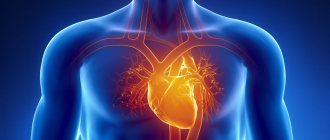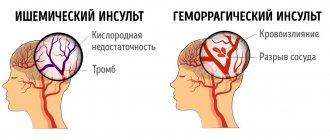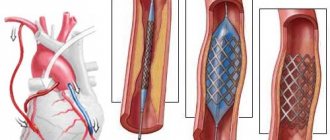Is a stroke a valid reason for disability?
Elderly citizens often face this problem, although the anomaly can also affect young people. In any case, experts divide stroke into:
- hemorrhagic, characterized by profuse bleeding of the brain, affecting most of it;
- ischemic, in which, against the background of minor hemorrhage, massive blockage of blood vessels is observed.
In both cases, a functional malfunction in the brain cannot be ruled out. For example, the following are diagnosed:
- paresis, paralysis;
- chewing dysfunction;
- decrease or loss of memory;
- deterioration in the ability to speak;
- visual abnormalities up to loss of function;
- problems with the musculoskeletal system.
One of the listed manifestations is often enough for experts to record the inability of the subject to take care of himself independently and his need for support (including from the state).
To cope with the consequences of the anomaly, exercise therapy, massage, and physiotherapy are used as rehabilitation. The more competent and quickly the health improvement measures were taken, the higher the chances of getting a light group.
Who is eligible for disability after a stroke?
The disease in question is included in the list of health problems that qualify for special status. But according to the law, in addition to diagnosis, ITU experts must observe a serious limitation of capabilities (at least one). That is, in case of successful rehabilitation, they are not sent for examination.
The question of establishing a group becomes relevant only if there is no positive result from treatment or if the prognosis is unfavorable (there is a risk of a second strike, etc.).
Determination of disability group after stroke in 2020
During the medical and social examination (MSE), doctors, before making a decision on assigning a group, take into account a number of criteria, the degree of loss of various opportunities, and more:
| Disability group | Degree of lesions | EDSS score | Characteristics |
| Third | 40-60% | 3,0-4,5 |
|
| Second | 60-80% | 5,0-7,0 | Despite the presence of persistent impairments, the patient is able to take care of himself. Work skills are often retained. |
| First | >80% | 7,5-9,5 |
· Requires constant care from another person. |
In the process of examination, in addition to the state of health, the social component of the subject’s life, conditions, etc. are taken into account.
Who is assigned disability?
The disease never goes away without consequences. Up to 70% of victims of hemorrhagic stroke, and about 30% of victims of ischemic stroke, die in the first month after the stroke. Most of the rest lose the ability to work, sensitivity, the ability to move, and take care of themselves.
We can talk about the chances of a full recovery only in mild cases of ischemic stroke, mainly in young people, for whom help was provided very quickly. There is a possibility that such patients will be denied registration for disability after an ischemic stroke, if not at the first application, then at re-examination.
Other stroke victims experience only partial recovery.
For reference. If signs of functional impairment, inability to work or perform certain types of work are confirmed, disability should be assigned.
Signs of functional disorders include movement disorders, muscle weakness, coordination disorders, decreased sensitivity, hearing loss, vision loss, and problems with swallowing. Other signs include memory impairment, decreased mental abilities, and speech dysfunction .
Prohibition on certain types of work activities
The right to work remains despite the special status, although the recipient must work taking into account his capabilities and medical recommendations. After a stroke, it is usually advised to avoid:
— harmful working conditions;
— psychological stress;
- standing on your feet for a long time;
— low temperatures for many hours;
In general, before employment, a worker with a disability should assess all risks to avoid recurrent stroke.
Basic benefits when receiving disability
A special status caused by a stroke provides benefits and cash payments. The amount of assistance provided is similar to what is guaranteed to other citizens with disabilities:
| Types of benefits | Examples |
| Financial | 1. Payment of benefits according to the established group. 2. EDV. 3. Additional payments depending on various conditions: regional, for dependents or up to the subsistence level. |
| Tax | A discount on tax payments or their complete cancellation. |
| Housing | 1. Providing real estate for ownership or lease. 2. Subsidizing payment for housing and communal services. 3. Compensation for 50% of the amount spent on utility bills. |
| Social | 1. Free travel on public transport. 2. Job quotas. 3. Discount on purchasing train tickets. 4. Admission to a university under special conditions. |
| Medical | 1. Extraordinary care in hospitals. 2. Issuing prescription medications free of charge. 3. Free trip to the sanatorium. |
If the problem has caused paralysis, visual, auditory or other anomalies, the necessary devices (hearing aid, cane, etc.) are provided to compensate for lost capabilities. But special TSRs specifically for stroke patients are not provided.
Registration process
First of all, the attending physician or social security representative must refer the patient to a medical examination. Only the officially recorded diagnosis is considered, medical records are taken into account. maps and present lesions.
You can apply for the group after your condition has stabilized, that is, when at least 4 months have passed since the impact. If there are grounds for assigning a disability, the doctor first sends you for tests and examinations and only after that sends you to an ITU.
List of documents
According to the law, a potential beneficiary presents to the ITU Bureau:
— your SNILS and passport;
— application form 088/у-06;
— extracts from the medical history;
- referral for examination.
A reference from the place of work is attached if the person being examined was employed before the illness.
Where to contact
With the prepared documents on a specific day, you should appear for a commission at the ITU bureau (by registration or by type of illness - there may be such departments in the regions).
Refusal to provide a certificate of disability
The inspection procedure involves assessing:
— general condition;
— degree of deterioration of capabilities;
— the impact of the problem on the quality of life.
After the inspection, questioning, and study of documents, the commission members deliberate, vote and notify the examinee of their decision. The status may not be assigned when:
— criteria have not been identified that would allow establishing even the easiest group 3;
- the documents are fake (here it can even lead to a criminal case).
How to appeal an ITU decision
If a negative decision is regarded as violating the rights of the beneficiary, you can appeal the ITU result step by step. To do this you should:
- seek new direction;
— provide a package of papers to a higher bureau;
— repeat the health assessment procedure.
If you refuse again, you can go to court. Additionally, the involvement of an independent expert is allowed.
Re-examination
Only pensioners are entitled to permanent disability after a stroke. All other citizens need to undergo re-examination regularly. For disabled people of the first group - once every two years, for others - once a year.
During the re-examination, the same package of papers is provided as during the initial examination, but includes a document that confirms the previously given disability.
However, if within 5 years the results of the re-examination have not changed and it is clear that the identified disorders cannot be eliminated or reduced with the help of rehabilitation measures, the person receives it for life.
For reference. If positive dynamics are detected, re-registration may be refused or a decision may be made to appoint another group.
The patient himself, as well as his relatives, are usually concerned about the issue of disability after a stroke. This is an important stage of life after a person has been discharged from the hospital. Repeated examinations, tests, collection of other documents, and examination takes a long time.
However, after completing the registration, a person receives benefits for the purchase of medicines, travel on transport, payment for housing and communal services, and a pension. Any of these points helps in rehabilitation after illness.
Peculiarities of assigning disability in non-standard cases
Since after a stroke the consequences can be very unpredictable, various nuances are taken into account when establishing disability. Let's take a closer look at them.
Pensioners
Preferential status in this case is formalized in the same way as when examining other patients. That is, the requirements are similar to those described above. The only significant difference is the ability to immediately receive a group for life. In any case, after being assigned a disability, the pensioner must additionally contact the Pension Fund to recalculate the pension.
Unemployed
The health of citizens who do not have a permanent place of work is assessed by specialists according to standard criteria for all. It’s even a little easier for the unemployed, since they don’t have to wait 4 months and apply for sick leave like employed people. But without work experience, you are only entitled to a social disability pension.
Bedridden patients
In difficult situations, when a potential beneficiary is not able to visit the ITU office, there are several options:
— carry out a health check at home or in a hospital;
— make a decision based on the medical history and other documents without the patient’s personal presence.
List of required documents
Regardless of whether the patient has previously worked or not, he has the opportunity to assign a group to receive payments due to disability. If we are talking about hemorrhagic stroke, registration often occurs already from the hospital. But despite this. You can still assign a group several months after the incident. This possibility remains if the patient still has all the negative symptoms that he had during hospital treatment.
The question of how to register disability after a stroke is influenced not only by the presence of negative consequences, but also by the necessary papers. The list of required documents includes:
- a completed application for a commission;
- referral to ITU;
- patient's outpatient card with medical history;
- if the application is submitted immediately after treatment, discharge from the hospital is required;
- conclusion of all specified highly specialized doctors;
- diagnostic results;
- photocopy of passport;
- if the patient previously worked, a photocopy of the work book is required;
- certificate of income from work (if the patient is officially employed).
Re-examination
If the disability is not permanent and requires periodic confirmation of the group, the beneficiary is required to undergo another examination before the certificate expires. In addition, the condition assessment process may be caused by deterioration in performance.
Be that as it may, the criteria established by law are always considered and taken into account. And if you miss the moment when the certificate expires, your pension and benefits will be cancelled.
| Disability group | Validity period of the certificate |
| First, second | 2 years |
| Third | 1 year |
By the way, if your health deteriorates significantly, you can even reconsider the indefinite group.
Stroke
Pathogenesis allows us to talk about two types of stroke. The first one is the most common. It is associated with disturbances of blood flow in the brain due to a blood clot, atherosclerotic plaque, and other reasons. As a result, nerve tissues suffer and die. This is how ischemic stroke .
Hemorrhagic occurs due to the rupture of a cerebral vessel and the outpouring of blood from it. This form is considered the most severe and requires immediate surgical intervention.











